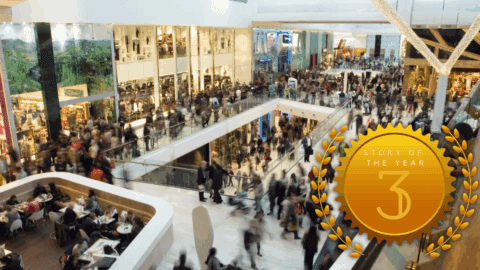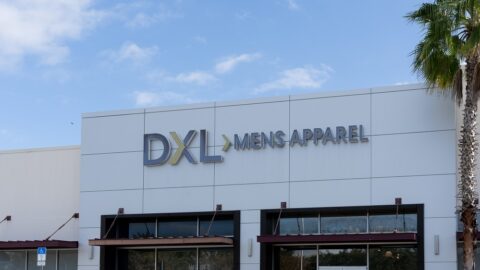COVID has pushed retail supply chains to their limits, from the initial stock-up period at the start of the pandemic to the unprecedented ecommerce rush of the holiday season. However, retailers have risen to the occasion and adjusted their operations accordingly — and now they need to look to the future and plan for a post-pandemic future, according to the Enabling a Resilient & Connected Supply Chain in a Post-Pandemic World webinar from the IoT Consortium and GS1 US.
“I would say by and large that consumer product manufacturers and retailers working in the private label space are finding ways to source products to fill the shelves,” said Melanie Nuce, SVP, Corporate Development at GS1 US during the webinar. “I was just in a mass merchant store the other day and they had a display with a bunch of different types of disinfectants and hand sanitizer brands I had never heard of prior to the pandemic. I think we have a responsive supply chain, it’s just going to be interesting to see what consumer behaviors stick and what are just temporary coping mechanisms.”
Some of the upcoming challenges examined by the panel of retail executives and industry experts included:
- Managing new logistics issues: Supply chains adjusted to new manufacturing needs months ago, but now retailers need to think about how those products get to the store — or directly to the customer — and how that will continue changing after COVID;
- Taking omnichannel to the next level: Retailers need to view omnichannel as encompassing the entire path to purchase rather than as the merger of two distinct channels — a mindset that should be reflected in store operations; and
- Preparing for the post-pandemic shopper: Just because people can return to in-person shopping doesn’t mean they will, so retailers need to come up with ways to attract convenience-focused customers.
Production is No Longer a Challenge, but Logistics Remain Strained
The industry has come a long way from the scramble of March 2020, when essential retailers’ shelves were empty and non-essential retailers had to revamp their entire business models. Now the key challenge is capacity. Ecommerce is unlikely to ever fully return to pre-pandemic levels, and retailers need to plan for just how buying habits will change, and what that means for getting their inventory into the right place at the right time.
“I would say that the forecasting for what was going to be needed has changed, based on the impact of the pandemic and human behavior on shopping,” said Alan Boehme, CTO at H&M Group during the webinar. “I think that there’s plenty of inventory — it’s just a different mechanism to get it there.”
Boehme expects delivery and fulfillment to remain the major constraints throughout the winter, and he warned that smaller retailers lacking the clout of their larger peers will have a more difficult time staying fully stocked. The key will be making supply chains smarter and more sophisticated to make the most of available capacity, and leveraging buy online, pick up in-store (BOPIS) services to pick up the slack when the last mile inevitably becomes full of roadblocks.
Omnichannel Means One Channel, Not Two Connected Channels
For many retailers, omnichannel is about enabling the in-store experience online and vice versa, letting shoppers freely switch channels during their journey. However, the future of retail lies in a singular, seamless shopping experience — one that completely encompasses every potential path to purchase and combines relevant data from every touch point. Retailers need to connect the dots of overall shopping behavior rather than silo information based on where transactions were initiated or completed. Retailers that can accomplish this will have greater insights into customer behavior overall, as well as being able to divine the purpose of individual shopping trips.
“If you have the right data, not just about systems and processes and things but people, you can make it so that when I walk in the store they know that I’m there to pick up an order, and what other things I’ve often put in the cart when I check out,” said Jeanette Medlin Barlow, VP, Strategy and Offering Management at IBM Sterling Supply Chain during the webinar. “You can create that blended experience, and I think this is where the advantage of having that real estate footprint is going to come into play.”
This same interplay of data will be vital to fulfillment. Retailers need to understand where and when their customers shop, as well as the real estate available in a given area, to create a modern last mile model. For instance, nearby non-competing retailers with similar customer bases can serve as staging points for convenient BOPIS trips that combine multiple orders, to the benefit of both the retailers and customers.
Experience Will Be Top of Mind in the Post-COVID Environment
Getting the omnichannel experience right is going to be just one part of the equation once the vaccine rolls out, since consumers who have been stuck at home for months may not choose a routine shopping trip as their ideal first outside activity. Retailers will need to go out of their way to make their stores a destination, and also provide convenience by ensuring that the routine elements of a shopping trip are painless.
“This ‘retailtainment’ aspect falls into these locations and becomes very important because people are getting tired of being at home,” said Myron Burke, Founder and Principal at Divergent Technology Advisors and former VP, Global Business Process at Walmart. “Yes, they’re cooking more at home. Yes, they’re having more family time. But I think people are getting a little bit of cabin fever and it’ll be interesting to see, after the vaccine for the virus is distributed, how people respond to coming out into society and where they want to spend their time. I don’t think it’s doing shopping lists. Quite honestly, I think they want to use that time in a more functional way.”
A fully connected supply chain and completely seamless shopping experiences will be essential to helping shoppers get the most out of their time. If customers know a retailer will have what they want and that it’s offering something more interesting than the usual experience, the store can become a destination rather than a chore.













